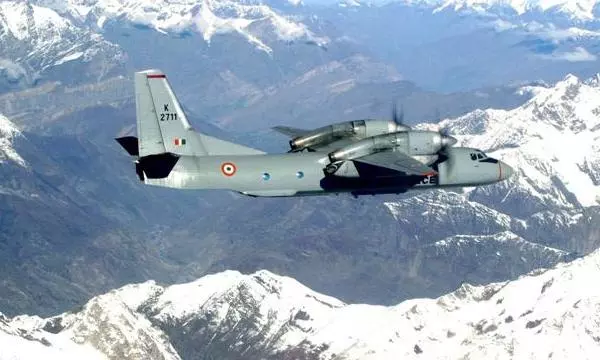
Scenic, historically significant Kargil in vain quest for civilian airport
An airport for the Ladakh town was included under UDAN 4 times, but never happened; a large runway was built during Congress rule, but insufficient for civil aircraft

Long years after the idea was first mooted, Kargil in the scenic Himalayan region remains hungry for a civilian airport.
For decades, leaders in Kargil have sought regular air services.
Kargil is the second largest urban centre after Leh in Ladakh, which is administered by the Central government.
Shocking revelation
No wonder, numerous eyebrows were raised in the region when the Centre informed Parliament recently that the Ladakh administration has not requested a new feasibility study to build a civilian airport in Kargil.
Mohd Jaffer Akhoon, Chief Executive Councillor of the Ladakh Hill Development Council, was shocked by the government response.
Also read | Dilli chalo | Why a group of Ladakhis are on a month-long padayatra
"The demand for a civilian airport has been consistently raised by Kargil’s leadership for years. The claim that the Ladakh administration has not requested a new feasibility study is unfortunate and surprising," Akhoon told The Federal.
Kargil hungry for airport
Akhoon says the Union government has repeatedly ignored this issue although a civilian airport has the potential to improve the district’s economy drastically.
“Kargil’s airport was included under the UDAN scheme four times. During the Congress era, an airport runway was built. However, it was unsuitable for civilian operations. To date, not a single civilian aircraft has landed in Kargil,” he added.
Also read | One Nation, One Water? Why Ladakhis are wary of Jal Jeevan Mission
The history of Kargil airport dates back to 1996, when the Jammu and Kashmir government – Ladakh was then part of the undivided state of J&K – constructed an airstrip and leased it to the Airports Authority of India (AAI) for civilian use.
Kargil conflict
However, during the Kargil conflict with Pakistan in 1999, the airport suffered damage, leading to its operational control being transferred to the Indian Air Force (IAF) in 2003.
Since then, civilian operations have remained suspended despite persistent demands from Kargil’s leaders and residents.
Mohmad Haneefa Jan, the MP from Ladakh, has been advocating for improved air connectivity in Kargil, including the development of a new airport and operationalizing flights from the existing one.
Despite past surveys to assess potential sites in Kargil, Wakha, Turtuk, Diskit, Nyoma and Padum/Zanskar, no location was deemed suitable. In 2018, Kargil was shortlisted under the UDAN scheme’s second phase for regional connectivity but no commercial flights were introduced due to infrastructure constraints.
In 2021, assessments by the AAI, the IAF and the Director General of Civil Aviation (DGCA) deemed the terrain unsuitable for large-scale airports.
Which aircraft?
A 2023 review concluded that only 19-seater aircraft could safely operate with the existing infrastructure, excluding larger planes like Boeing 737s and Airbus A320s.
Jan, the MP, says he has requested the government to explore the option of operating a 50-seater turbo-engine aircraft like SpiceJet’s single-engine planes at Kargil airport. Only if that is not feasible should a 19-seater aircraft be considered, he said.
“The Civil Aviation Minister is keen on convincing an airline to start operations in Kargil. I have also sought the home ministry's intervention," he added.
Also read | In photos: Breathtaking views of Z-Morh tunnel in Sonamarg
According to Jan, while the Zoji-la tunnel may improve road access in the coming years, winter air connectivity remains a pressing issue in Kargil. The horseshoe-shaped tunnel, at a height of over 11,000 feet above sea level, connects Ganderbal in Kashmir with Drass town in Kargil district.
Lives at risk
"Students and patients face severe hardships during harsh winters, and are often stranded in Jammu and Srinagar,” he said.
“Many lives have been lost due to lack of access to super-specialty healthcare, which could have been prevented if airlifting was an option.”
Watch | Shivaji statue at Pangong Tso sparks row in Ladakh
Despite military aircraft like the AN-32 and C-17 successfully landing at Kargil, no commercial airline operates there.
This has made some people ask: If military planes can land, why can't civilian aircraft?
Senior Congress leader and tourism expert Nasir Munshi has called for an end to relying AN-32 cargo courier services to airlift civilians, arguing that this temporary solution has prevented people from demanding regular civilian air services in Kargil.
He emphasised that developing and promoting Kargil as a tourist destination should not be left solely to local travel businesses and hoteliers.
Kargil’s tourism potential
Instead, the government must take proactive steps to harness Kargil’s untapped tourism potential and bolster efforts to initiate air services.
Also read | Ladakh TT team at Nationals: From playing without coach to being Dhoni, Kohli fans
Highlighting Kargil’s rich heritage, Munshi pointed out that the only known Maitreya Buddha statues in the world are found in Kargil. Scenic regions like Suru Valley and Drass remain largely unexplored by tourists.
Jan, the MP, says he is now engaged with the Civil Aviation Ministry and is seeking an assurance that a fresh survey for a new airport in Kargil will be considered upon a formal request from the Ladakh administration.
According to him, a retired pilot had previously suggested that the current airport, if extended leftwards towards Pashkum and Wakha Nallah, will help in improving the operations of the airport.
"If the Union Home Ministry takes this matter seriously, they can convince an airline company to operate flights,” he added. “Subsidies and other incentives should be explored to make this a viable option.”
